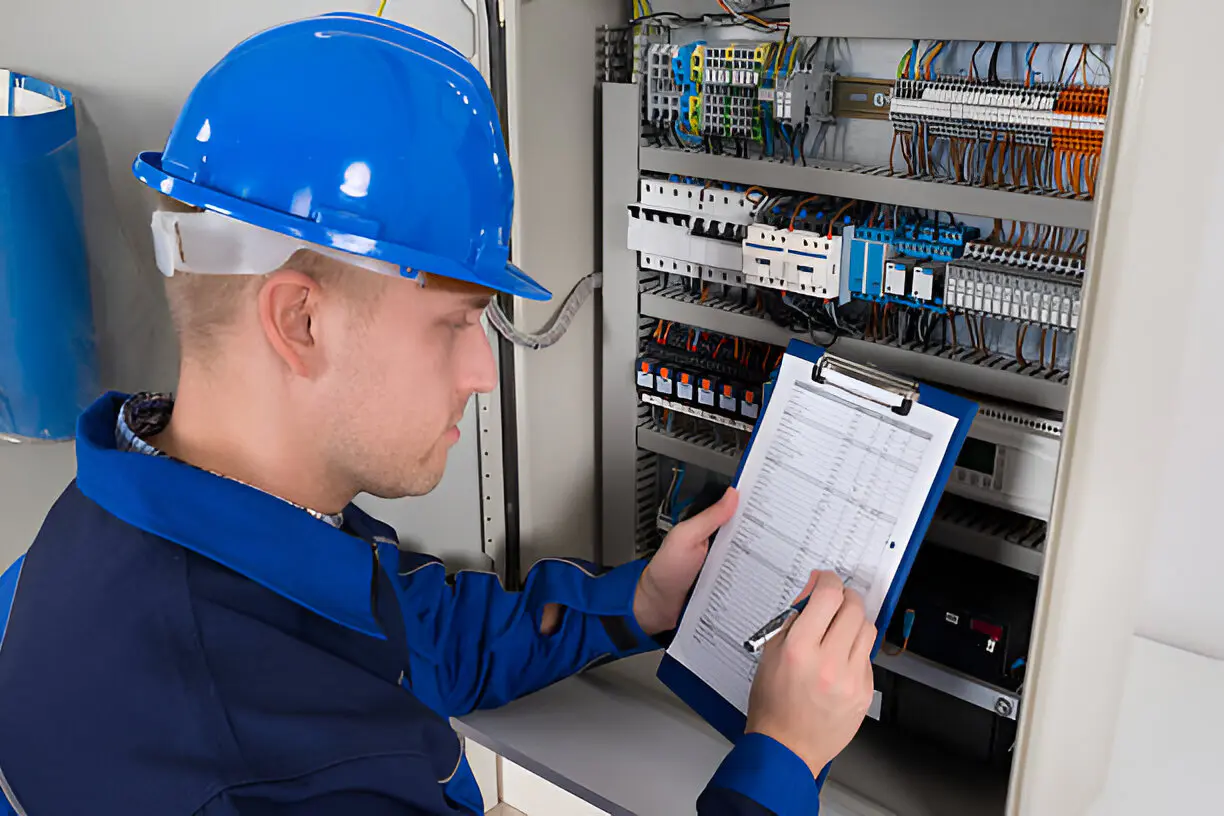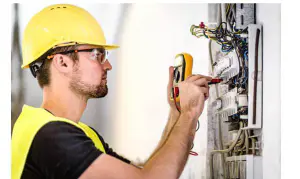In the realm of electrical safety, the Electrical Installation Condition Report (EICR) serves as a critical assessment tool, designed to ensure installations adhere to safety standards. However, a common query persists: is it necessary to test every circuit during this evaluation? While some might argue that comprehensive testing guarantees the integrity of the electrical system, others point to a selective testing approach, driven by factors such as the age of the installation, usage patterns, and environmental influences. This raises pertinent questions about the balance between thoroughness and practicality in ensuring electrical safety. What, then, might be the implications of choosing one approach over the other? Let’s understand Do You Have to Test Every Circuit on an EICR?
What Does an EICR Involve and What Does It Assess?
An Electrical Installation Condition Report (EICR) is an essential assessment conducted by qualified electricians to evaluate the safety and integrity of the electrical installations within a property. This comprehensive inspection scrutinizes the efficiency and condition of an electrical system, focusing on identifying any deterioration, defects, or deviations from the wiring standards that could potentially pose safety hazards.

The EICR process involves a series of detailed inspections and tests. Initially, visual assessments are conducted to detect any overt signs of damage or wear. Electricians examine the fuse board, the condition of the wiring, and the suitability of electrical fittings.
Following this, a more meticulous testing phase begins, where various electrical attributes such as circuit continuity, insulation resistance, and earth fault loop impedance are measured using specialized equipment. These tests help in assessing the potential risks of electric shock or fire hazards.
Additionally, the EICR evaluates the adequacy of earthing and bonding—a crucial aspect for safety—alongside the functionality of residual current devices (RCDs), which protect against electric shock.
The final report generated from an EICR provides a detailed account of the installation’s condition, indicating any necessary remedial actions or recommendations for improvements, ensuring compliance with current electrical standards and safety regulations.
Is It Necessary to Test Every Circuit During an EICR?
Determining whether every circuit needs testing during an EICR can depend on various factors, including the age and condition of the installation, as well as the purpose of the inspection. A comprehensive assessment often necessitates a detailed examination of each circuit to fully gauge the electrical system’s integrity, safety, and compliance with current regulations.
However, the necessity to test every circuit might not always be straightforward. The decision to test each circuit should be informed by a risk-based approach, considering the specific characteristics and usage of the electrical installation.
For instance, environments that undergo frequent alterations, such as industrial settings or public buildings, might require more rigorous scrutiny compared to a residential property with minimal electrical demands and stable configurations.
Moreover, the inspector’s professional judgment plays a crucial role in this process. Experienced inspectors can identify potential risks and anomalies that might necessitate targeted testing beyond routine checks.
They assess not only the physical condition but also the operational reliability of circuits, integrating both visual inspections and instrumental measurements to provide a precise and comprehensive evaluation of the electrical system’s safety and functionality.
Reasons Some Circuits May Be Exempt from EICR Testing
Several reasons might justify the exemption of certain circuits from testing during an Electrical Installation Condition Report (EICR).
These exemptions are generally based on the specific circumstances and characteristics of the electrical installation, as well as the environment in which it operates. The decision to exempt certain circuits must always adhere to rigorous safety standards and legal requirements, ensuring that the overall integrity of the electrical system is not compromised.
Key reasons for circuit exemptions include:
- Redundancy: Circuits that are redundant and not in active use may be exempted from prioritizing active systems.
- Specialized Equipment: Circuits exclusively connected to specialized equipment that require manufacturer-specific testing protocols.
- Accessibility Issues: Circuits that are inaccessible due to structural limitations or safety hazards, where testing poses risks to personnel.
- Recent Verification: Circuits that have been recently tested and verified through rigorous assessment during renovations or upgrades may not require immediate re-testing.
These exemptions require a strategic approach to ensure that safety is not compromised while also maintaining efficiency in the testing process.
Each decision to exempt must be supported by a clear rationale and documented evidence to uphold compliance and safety standards.
How Are Decisions Made About Which Circuits to Test in an EICR?
Decisions on which circuits to test during an Electrical Installation Condition Report (EICR) are guided by a combination of regulatory requirements, the age and condition of the installation, and specific usage patterns of the electrical system.

The assessment process begins with a thorough review of the installation’s documentation, which provides vital insights into any historical modifications and existing configurations. This preliminary evaluation assists in identifying circuits that may have undergone significant alterations or are prone to higher wear and tear, necessitating closer scrutiny.
Additionally, the choice of circuits for testing is influenced by the environment in which they operate. Circuits exposed to harsh conditions, such as high humidity, temperature extremes, or corrosive substances, are prioritized due to their elevated risk of deterioration.
The testing strategy is further refined by considering the operational criticality of various circuits; those serving essential systems or supporting significant load variations require more frequent and detailed examination.
Electrical safety standards and codes also play a crucial role, dictating mandatory tests for certain types of installations and suggesting intervals for routine checks.
This regulatory framework ensures that the selection process aligns with the best practices aimed at minimizing electrical hazards and enhancing system reliability.
Why Testing Critical Circuits is Essential in an EICR
Understanding the importance of testing critical circuits during an Electrical Installation Condition Report (EICR) helps ensure the safety and efficiency of the electrical system. Critical circuits, such as those supplying power to safety systems and essential operations, require a thorough inspection to verify their integrity and functionality. This rigorous testing mitigates risks associated with electrical failures, which can lead to severe consequences.
Key reasons to prioritize the testing of critical circuits include:
- Prevention of Electrical Fires: By detecting issues like overloads, insulation breakdowns, or faulty connections, testing helps prevent conditions that could lead to fires.
- Ensuring Operational Continuity: Critical circuits often support essential services and equipment. Testing confirms their reliability, minimizing downtime and operational disruptions.
- Compliance with Safety Standards: Regular testing of these circuits ensures compliance with national electrical codes and standards, which dictate safety measures and operational criteria.
- Early Detection of Wear and Deterioration: Regular assessments can identify wear and tear before it evolves into a more serious problem, allowing for timely maintenance and replacements.
What Are the Consequences of Not Testing a Circuit in an EICR?
Failing to test a circuit during an Electrical Installation Condition Report (EICR) can lead to significant and often severe consequences. An untested circuit may harbor latent defects or deteriorations that compromise the safety and functionality of the electrical installation. Such oversights can result in electrical fires, shock hazards, or system failures, which not only endanger human life but also lead to costly property damage.

Moreover, bypassing circuit testing during an EICR violates regulatory compliance standards set forth by the electricity at work regulations. This oversight could potentially expose property owners and responsible persons to legal liabilities, including fines or more stringent legal consequences if negligence is proven in the event of an incident.
The integrity of an electrical system relies heavily on the thoroughness of its inspection and maintenance. An incomplete EICR undermines the reliability of the electrical installation’s operational assurance, leading to increased maintenance costs over time due to undetected problems that could escalate into major failures.
Therefore, comprehensive testing of every circuit is not merely a procedural formality but a crucial risk management practice that safeguards assets, ensures safety, and complies with legal obligations.
Conclusion
In conclusion, not every circuit is mandatorily tested during an EICR due to factors such as environmental conditions, installation age, and operational criticality. Exemptions may arise from accessibility issues or recent verifications. Decisions on circuit testing are grounded in a risk-based approach, aligned with regulatory standards and professional judgment. The omission of testing certain circuits can lead to overlooked defects, potentially compromising safety and compliance. Hence, strategic testing decisions are crucial for ensuring electrical integrity and safety.









